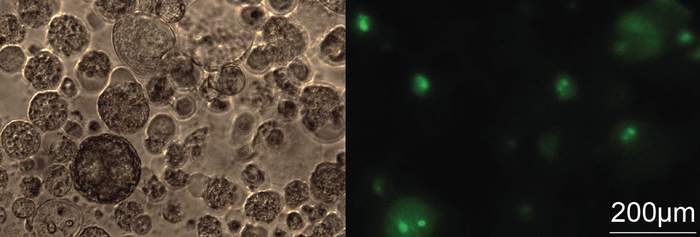Scientists are targeting a type of genes called “long noncoding RNAs (Ribonucleic acids)” (lncRNAs) to target for cancer treatment. Non-small cell lung cancer (NSCLC) is the most common type of lung cancer. Over 2 million people were diagnosed with lung cancer in 2020.
The Dark Matter of the Genome
For new targets, they looked at the poorly-understood class of genes called “long noncoding RNAs. LncRNAs exist in abundance in the so-called “Dark Matter” or non-protein-coding DNA that constitutes the vast majority of our genome. The human genome contains around 20’000 “classical” protein-coding genes, but this number is dwarfed by 100’000 lncRNAs. Of 99% of lncRNAs the biological functions are unknown.
As the name long noncoding RNAs implies, unlike messenger RNAs (mRNAs), they do not encode the construction plans for proteins. Like for mRNAs, the building instructions for lncRNAs are contained in the cell’s DNA.
New Tool Determines Potential Targets
To study the role of lncRNAs in NSCLC, the researchers started by analyzing publicly available datasets to see which lncRNAs are present in NSCLC. This analysis led to a list of over 800 lnRNAs, whose importance for NSCLC cells the researchers wished to investigate. For this investigation, they developed a screening system which prevents the production of the selected lncRNAs by deleting part of their construction instructions in the DNA.
They applied their screening system to two NSCLC cell lines derived from patients, and looked how the inhibition of the selected lncRNAs affected so called “hallmarks” of cancer cells. Hallmarks are cellular behaviors that contribute to disease progression: Proliferation, metastasis formation and therapy resistance. “The advantage of assessing three different cancer hallmarks is that we have a comprehensive view but also have substantial amounts of data from different experiments, from which we needed to derive a single list of long noncoding RNAS that are important for non-small cell lung cancer,” says Rory Johnson, Assistant Professor at the University of Bern, who led the NCCR RNA & Disease funded project. The analysis yielded in the end a list of 80 high-confidence candidate lncRNAs important for NSCLC out of the over 800 investigated. From these 80, the researchers picked out several lncRNAs for follow up experiments.
Destroying a Long RNA With a Short One
For these follow up experiments an approach was used, which does not work at the DNA level but targets lncRNAs after their production. For this purpose, the researchers used small chemically-synthesized RNAs called Antisense Oligonucleotides (ASOs), which bind to the lncRNAs they target and lead to their degradation. Of note, several ASOs are approved for treating human diseases, although none yet for cancer.
These follow up experiments showed that, for the majority of the picked lnRNAs, their destruction by an ASO inhibited cancer cell division in cell culture. Importantly, the same treatment produced little if any effect on non-cancerous lung cells, which should not be harmed by the cancer treatment. In a 3-dimensional model of NSCLC, which more closely resembles the tumor than cell culture, the inhibition of a single lncRNA with an ASO reduced the tumor growth by more than half.

Source: Multi-hallmark long noncoding RNA maps reveal non-small cell lung cancer vulnerabilities
This article is based on the press release by the University of Bern and the Insel Hospital, University Hospital Bern. Content may be edited.